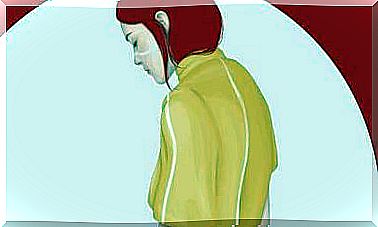Cupid’s Disease: The Woman Who Changed At The Age Of 90

Cupid’s disease is the name that the neurologist Oliver Sacks gave to one of the cases he attended in consultation. This is a neurological clinical case, which, however, has important psychological implications and leads to a reflection on the concepts of normality and abnormality, health and disease, well-being and discomfort.
The Cupid’s disease case is related to a 90-year-old woman named Natasha. He came for consultation of his own free will, after having had a great change in his life two years earlier. It happened that, shortly after she turned 88, she aroused a very intense interest in young men. She noted that she had become “frisky” and called that transformation “delicious.”
In short, she had become very flirtatious. The motivation: men who were double or triple in age. Also, that was not the only change he had. Until recently, Natasha had been a shy and reserved woman. With the change of 88 years, she had also become talkative and giggly. He spent his time telling jokes and making jokes.

Cupid’s disease
Natasha looked completely lucid. Humor and flirtation aside, she showed no other changes. In fact, could an older woman, suddenly “acting like a young girl,” be considered ill? She herself defined her status as fabulous. So why did you want the query?
The answer appeared during the interview with the doctor. Natasha had not always been a reserved woman. Long ago he had worked in a brothel in Solomon. She was 20 years old at the time and her work had led her to contract syphilis. The girls in the brothel called this disease Cupid’s disease.
At the time that Natasha had contracted Cupid’s disease, syphilis treatments were very poor. A man had fallen in love with her, taken her out of the brothel and married her. He himself helped her with the treatment. Everything indicated that the infection had been contained, but not eradicated. In those years penicillin was not used yet.
An illness?
Natasha herself was the one who suspected that the changes in her behavior were a new manifestation of Cupid’s disease, that is, syphilis. More exactly, of neurosyphilis. The neurologist thought this might be true. It is rare that this type of manifestation occurs 70 years later, but it was not ruled out. Therefore, he evaluated the case in detail.
Clinical tests corroborated Natasha’s self-diagnosis. Indeed, there were signs of neurosyphilis and this was responsible for the change. However, once the diagnosis was established, Natasha made an unusual request: She didn’t want Cupid’s illness to get worse, but she didn’t want to get rid of it either.
The changes he had undergone in his behavior and in his life had had positive consequences. She felt renewed, vital, better than she had in many years. That is why “getting completely healed” was for her an option to discard.
In this way, he reached an agreement with the doctor. Penicillin would be administered to kill the bacteria that appeared in his spinal fluid, but no treatment would be given for the neurological effects. That was exactly what Natasha wanted.

Health and sickness
Natasha’s case referred Oliver Sacks to another case involving a man with mania, who had been hospitalized for this reason. He had trouble speaking, but communicated very well through pictures. The neurologist painted a square and asked him to replicate it, but the man instead painted a box full of oranges.
Days later he repeated the exercise. This time, the doctor painted a box and the man started from that figure to make a kite and a boy carrying it. It was clear that this mind, disturbed in some way, was also lively and creative. However, days later he was administered medication to control his mania. When asked to draw, he barely made a few lines.
Cases like that of Natasha’s Cupid’s disease and that of the cartoonist man, lead to a questioning about the normal and the abnormal. There are also known cases of people who, after an epilepsy attack, are left in a state of great mental and emotional balance. What to do in these situations? It is a question that does not have a simple answer.









